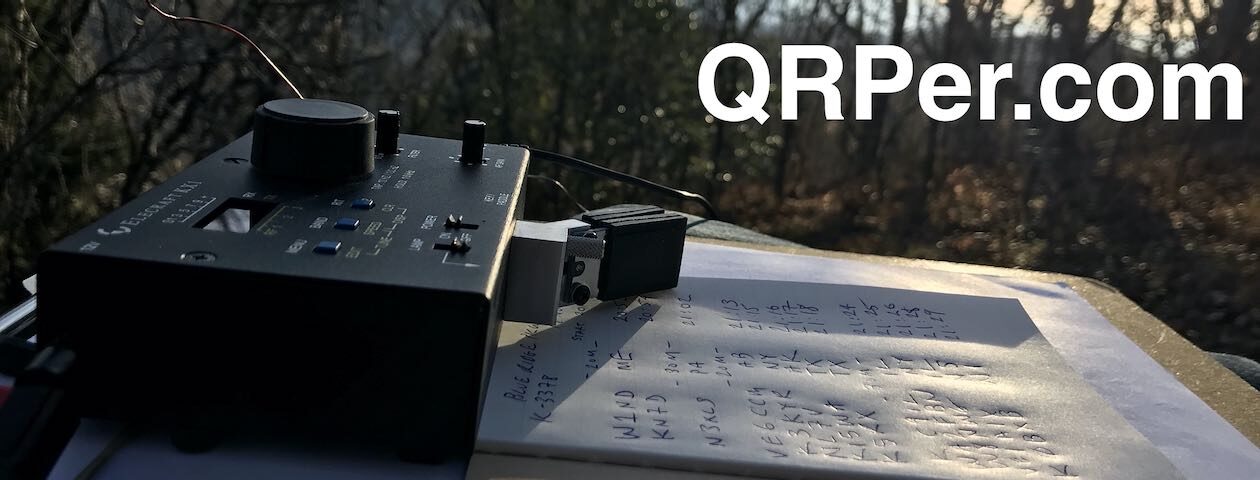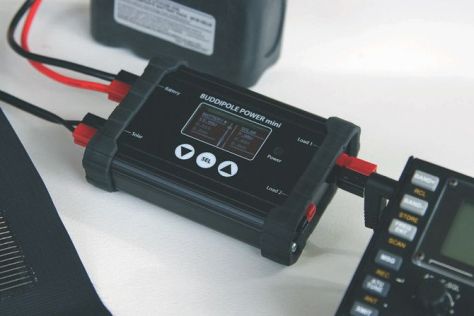 As you might have guessed, I’m a bit of a QRP radio addict.
As you might have guessed, I’m a bit of a QRP radio addict.
Over the years, I’ve owned and sold quite a few rigs; there are some models that gave me instant seller’s remorse.
In the past, I sold good QRP radios to buy “better” ones: transceivers that had a more compact form factor, better feature set, better battery management, or other desirable updates/upgrades.
Boomerang!
 In almost every case when I experienced seller’s remorse, that particular model of radio has eventually found its way back into my field kit.
In almost every case when I experienced seller’s remorse, that particular model of radio has eventually found its way back into my field kit.
A few examples:
- I sold my original Yaesu FT-817 to purchase an Elecraft KX1. In 2020 I purchased a used FT-817ND then the following year a second FT-817ND for full duplex satellite work.
- I sold my Elecraft KX1 to help fund the purchase of the Elecraft KX2. I purchased another KX1 in 2020.
- I sold my Elecraft K2/100 to fund the purchase of my Elecraft KXPA100. I don’t regret purchasing the KXPA100 in the slightest (even though I so rarely use it), but I do regret selling not one, but two K2s over the years! I’ll snap one up if I find a good deal.
I also sold my Elecraft K1 to help fund the purchase of my Elecraft KX3 in 2013.
At the time, the seller’s remorse wasn’t immediate because the KX3 was such a revolutionary portable radio in almost every respect. The K1 seemed so limited in comparison.
Still, since I started doing CW POTA and SOTA activations, I’ve been keeping an eye out for a good deal on another 4 band/ATU Elecraft K1.
Why does the K1 have appeal when I have so many “superior” radios at my disposal–?
Good question! I reckon I just like it.

The K1 feels more like an analog radio rather than a digital one; no doubt, this is due to its VFO’s limited range. It’s more akin to an analog radio with a digital frequency display.
The K1 is also super compact for a radio with a traditional tabletop form factor. The menus and features take a bit of time to learn–they’re cleverly implemented, but you definitely need an owner’s manual or cheat sheet to master them.
The K1 is not general coverage; it can only be configured to operate on a maximum of four CW bands. It does have an internal ATU option, but I don’t think it’s on par with the KX-series internal ATUs in terms of matching range. It works well with a variety of field antennas, though!
The K1 does have a very low noise floor and wonderful audio. Those are perhaps the two things I love most about it.
Hawks Nest State Park (K-1813)
During my West Virginia POTA expedition with Eric (WD8RIF), Miles (KD8KNC), and Theo (The “Great Warg”) dog we hit Hawk’s Nest State Park on Friday, May 20, 2022; this was our second park of the day (New River Gorge was our first).
En route to the site, Eric suggested I use his Elecraft K1 travel kit during this activation and I quickly accepted the offer!
I used everything in Eric’s Kit save the antenna.

Instead, I paired the K1 with the homemade 40M End-Fed Half-Wave MW0SAW kindly sent me.
I also used a 50′ of feedline so that I could move the antenna as far away as possible from the picnic shelter Eric and I would both be using during the activation.
The long feedline also made it possible to set up the antenna in a way that it wouldn’t interfere with any park guests who might walk by.
Gear:
- WD8RIF’s K1 Travel Kit which includes the:
- Elecraft K1
- Whiterook MK-33 single-lever paddle
- Moleskine Cahier Journal (affiliate link)
- MW0SAW end-fed half-wave
- Bioenno 3 aH LiFePo Battery (Model BLF-1203AB)
- Ham Radio Workbench DC Distribution Panel Model HRWB101
- Mini Arborist throw line kit: Tom Bihn Small Travel Tray, Marlow KF1050 Excel 2mm Throwline, and Weaver 8 or 10oz weight
- Rite In The Rain Weatherproof Cover/Pouch (affiliate link)
- GraphGear 0.9mm 1000 Automatic Drafting Pencil (affiliate link)
- Camera: OSMO Action Camera with Joby tripod (affiliate links)
On the Air
 The separation/distance from Eric’s Tri-Bander antenna worked a charm: there was very little interference between our two stations.
The separation/distance from Eric’s Tri-Bander antenna worked a charm: there was very little interference between our two stations.
I started the activation by calling CQ POTA on 20 meters. Funny: I actually thought I was on 40 meters; the K1 display (much like that of the KX1) only shows the last three digits of the frequency display; when I saw “61.1” I assumed “7061.1” but of course it was actually 14061.1. I realized this as I later changed meter bands.
Although the propagation forecast was pretty dismal, the EFHW performed very well.
Within 18 minutes, I logged 16 hunters (including WD8RIF some 20 feet away).
I then moved to the 40 meter band (so Eric could move to 20) and worked an additional six stations in six minutes!
The final contact was both an HF and eyeball QSO with WD8RIF. I got that on video–very much a fun first for me!
QSO Map
Here’s what my five watts into an end-fed half-wave looked like on a QSO Map:
Activation video
Here’s my real-time, real-life video of the entire activation with WD8RIF. I include a bit about Eric’s station and also his QRPguys Tri-Bander antenna after I go QRT. As with all of my videos, there are no ads and I don’t edit out any of the activation:
Click here to view on YouTube.
WD8RIF’s report
Make sure to check out Eric’s field report which includes details about his KX3 set-up that you’ll see in the video above.
Thank you!

Thank you for joining me (and Eric, Miles, & Theo) on this POTA activation.
Although detailed field reports take a few hours to write-up and publish (along with activation videos), I truly enjoy the process. It gives me a chance to re-live an activation and share the whole experience with kindred spirits. This was such a fun activation.
Of course, I’d also like to send a special thanks to those of you who have been supporting the site and channel through Patreon and the Coffee Fund. While certainly not a requirement as my content will always be free, I really appreciate the support.
Oh, and if you have a four band Elecraft K1 with ATU you’d like to part with? Get in touch with me!
Cheers & 72/73,
Thomas (K4SWL)

































